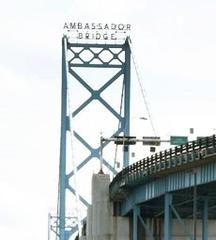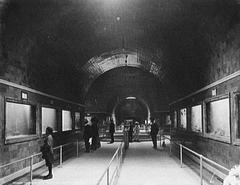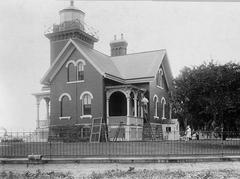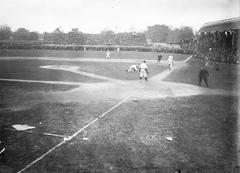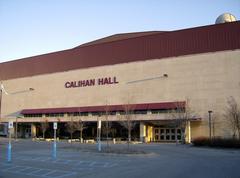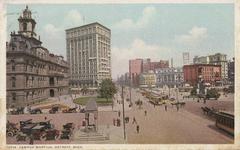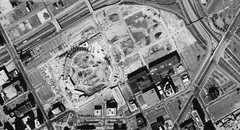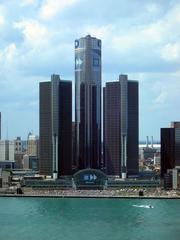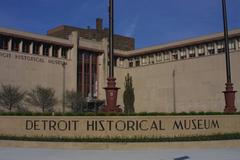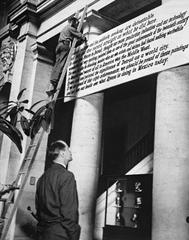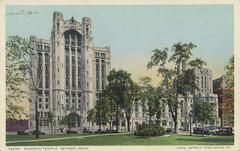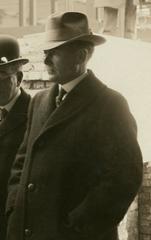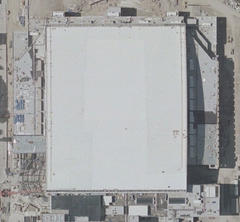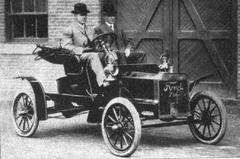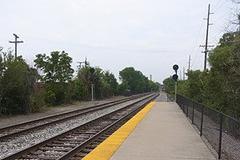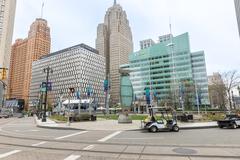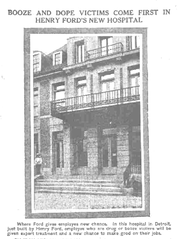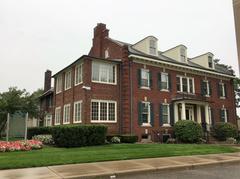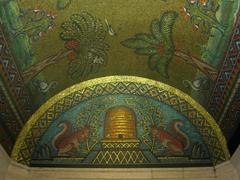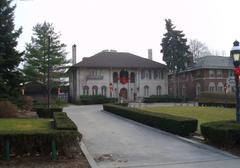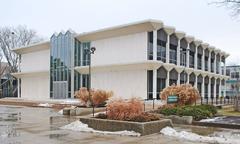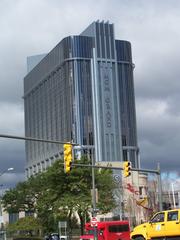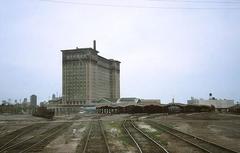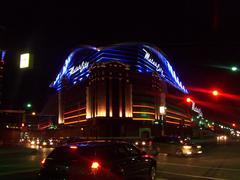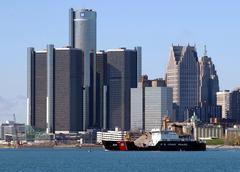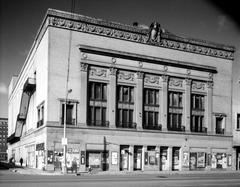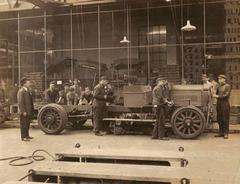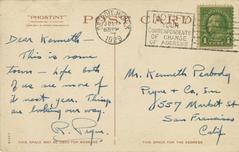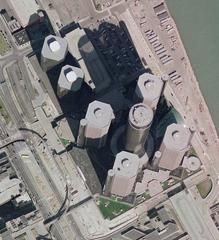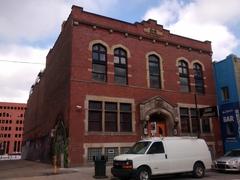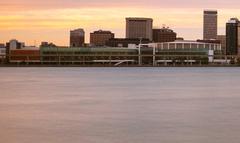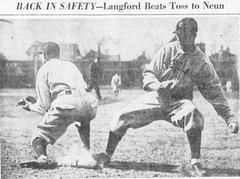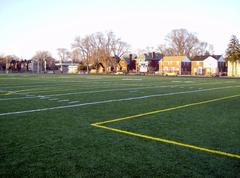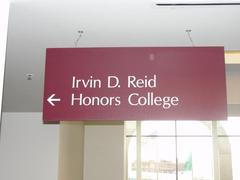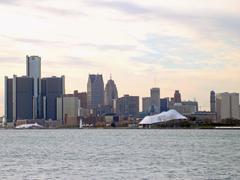Dorothy H. Turkel House Detroit: Visiting Hours, Tickets, and Historical Significance
Date: 04/07/2025
Introduction
Nestled in Detroit’s historic Palmer Woods neighborhood, the Dorothy H. Turkel House is a singular testament to Frank Lloyd Wright’s architectural genius and the Usonian Automatic design philosophy. Commissioned in 1955 by arts patron Dorothy H. Turkel and completed in 1956, it remains the only residence designed by Wright within Detroit city limits (Frank Lloyd Wright Building Conservancy). The house’s innovative use of over 6,000 custom-cast concrete blocks, modular construction, and seamless integration with the surrounding landscape exemplify Wright’s commitment to affordable, functional, and beautiful homes for America’s middle class—a vision that was transformative in Detroit’s mid-century era.
While embodying many Usonian ideals—open plans, radiant floor heating, and built-in furnishings—the Turkel House departs from the typical single-story Usonian model with its rare two-story, 4,300-square-foot scale. After periods of neglect, the home was meticulously restored beginning in 2006, ensuring fidelity to Wright’s original vision. Today, it stands as a National Register of Historic Places landmark, attracting local and international visitors intrigued by mid-century modern design and Detroit’s architectural heritage. Public access is limited, but special event tours occasionally offer a rare opportunity to experience this architectural treasure (Detroit Historical Society, Curbed Detroit).
Table of Contents
- Historical Context and Cultural Significance
- Architectural Features and Innovations
- Usonian Legacy and Distinctive Elements
- Preservation, Restoration, and Community Impact
- Visiting Information: Hours, Tickets, and Tours
- Visitor Etiquette, Accessibility, and Travel Tips
- Nearby Detroit Attractions
- FAQs
- Key Takeaways and Recommendations
- References
Historical Context and Cultural Significance
Commissioning and Construction
The Turkel House was commissioned in 1955 during a period of profound change in Detroit. Dorothy H. Turkel, a local arts patron, sought a modern home that reflected her family’s aspirations. Frank Lloyd Wright, then in his late 80s, answered the call with a design that matched the city’s optimism and the Turkel family’s ambitions. Completed in 1956, it is the only Wright-designed residence in Detroit (Frank Lloyd Wright Building Conservancy).
Usonian Ideals
Wright’s Usonian concept, developed in the 1930s, aimed to provide affordable, functional, and distinctly American homes for the middle class (Frank Lloyd Wright Foundation). Usonian homes are known for modest size, open plans, integration with nature, and the use of natural materials. The Turkel House, however, stands out for its two-story scale—one of the largest Usonian homes ever built—reflecting both the client’s needs and Wright’s flexibility (Curbed Detroit).
Architectural Features and Innovations
Spatial Organization
The Turkel House’s design centers on an open, flowing layout anchored by a central hearth. The double-height living room, cantilevered balcony, and extensive use of glass connect interior spaces to the gardens, blurring the boundary between indoors and out.
Materials and Construction
Wright’s Usonian Automatic system used custom-cast concrete blocks—over 6,000 in 36 geometric patterns—reinforced with steel rods for both structure and ornament (Frank Lloyd Wright Building Conservancy). Radiant floor heating and custom built-in furnishings add comfort and coherence (Architectural Digest).
Integration with Site
Set on a gently sloping lot, the house maximizes privacy and frames garden views. Wright’s signature overhanging eaves provide shade and reinforce the home’s horizontal emphasis, harmonizing it with its natural setting.
Usonian Legacy and Distinctive Elements
While sharing Usonian features—modular construction, built-ins, and simplicity—the Turkel House’s two-story scale and urban context distinguish it within Wright’s residential legacy (Detroit Free Press). Its adaptation of Usonian ideals to an urban environment highlights Wright’s inventiveness.
Preservation, Restoration, and Community Impact
Restoration Efforts
By the early 2000s, the Turkel House faced significant deterioration. In 2006, Norman Silk and Dale Morgan purchased the property and, with guidance from preservation experts, launched a meticulous restoration (ArchDaily). Restoration included:
- Repair and replacement of damaged blocks, matching original patterns and finishes.
- Restoration of original built-ins and finishes based on period photos and plans.
- Modernization of mechanical systems, such as radiant floor heating.
- Landscape enhancements, including a butterfly garden and expanded plantings to reinforce Wright’s vision of organic architecture (Turkel House Official Site, Michigan Modern).
Community Engagement
The Turkel House’s preservation has become a model for Detroit, inspiring community pride and serving as an educational resource. Collaborations with the Detroit Historical Society and Frank Lloyd Wright Building Conservancy promote wider appreciation of Detroit’s architectural heritage.
Visiting Information: Hours, Tickets, and Tours
Location
2760 West 7 Mile Road, Detroit, MI (Palmer Woods Neighborhood) (The Clio).
Visiting Hours and Tour Availability
- No daily public hours: The Turkel House is a private residence.
- Special event tours only: Tours are infrequent and announced in advance, primarily through the Detroit Historical Society and Frank Lloyd Wright Building Conservancy.
- Tickets: Must be purchased in advance. Tours often sell out quickly due to limited capacity; walk-ins are not allowed.
Booking and Contact
- Check Events Calendar: Detroit Historical Society Events
- Contact for questions: 313-833-0277
Accessibility
Due to its historic construction, accessibility is limited. Multiple levels and narrow doorways may pose challenges for visitors with mobility needs. Contact tour organizers to discuss accommodations.
Visitor Etiquette, Accessibility, and Travel Tips
- Respect privacy: This is a private residence. Remain with your group and follow all guidelines.
- Photography: Policies may vary; confirm before your visit.
- Parking: Street parking is available, but be mindful of local regulations and residents.
- Public transit: Limited. Driving is recommended.
- Dress appropriately: Comfortable shoes and weather-appropriate attire are advised.
Nearby Detroit Attractions
Enhance your visit by exploring additional Detroit historical sites:
- Detroit Institute of Arts
- Motown Museum
- Detroit Historical Museum
- Other Palmer Woods historic homes and neighborhoods
See more at Visit Detroit.
FAQs
Q: What are the visiting hours?
A: There are no daily public hours. Tours are offered occasionally during special events and require advance booking.
Q: How do I buy tickets?
A: Tickets are sold online through the Detroit Historical Society. Book early, as tours fill quickly.
Q: Is the house wheelchair accessible?
A: Accessibility is limited due to the original design. Contact organizers for details.
Q: Can I take photographs?
A: Policies vary by event. Confirm in advance.
Q: Are walk-ins permitted?
A: No. Only advance ticket holders may attend tours.
Key Takeaways and Recommendations
- The Dorothy H. Turkel House is Detroit’s only Frank Lloyd Wright residence and a significant mid-century modern landmark.
- Access is by special event tours only; plan ahead and purchase tickets early.
- Respect the home’s private residential status and follow all visitor guidelines.
- Explore other nearby cultural and architectural attractions to enrich your Detroit visit.
- Stay informed through official sources and consider using digital tools like the Audiala app for audio tours and updates.
References
- Frank Lloyd Wright Building Conservancy (savewright.org)
- Frank Lloyd Wright Foundation (franklloydwright.org/research/usonian-houses/)
- Curbed Detroit (curbed.com)
- Detroit Free Press (freep.com)
- Architectural Digest (architecturaldigest.com)
- Detroit Historical Society (detroithistorical.org)
- The Clio (theclio.com)
- Turkel House Official Site (turkelhouse.com)
- ArchDaily (archdaily.com)
- Michigan Modern (michiganmodern.org)
For the latest on tour availability and restoration news, visit the Turkel House Official Site and the Frank Lloyd Wright Building Conservancy.
Download the Audiala app for audio tours and updates, and follow us on social media for news about Detroit historical sites and special events.
